The racing Porsches for most budgets: 911, Cayman and Boxster track test
With the Carrera Cup, Sprint Challenge and Classic Boxster Cup, there is a UK Porsche race series for most budgets. Andrew Frankel finds the 911, 718 and 986 in fine voice...
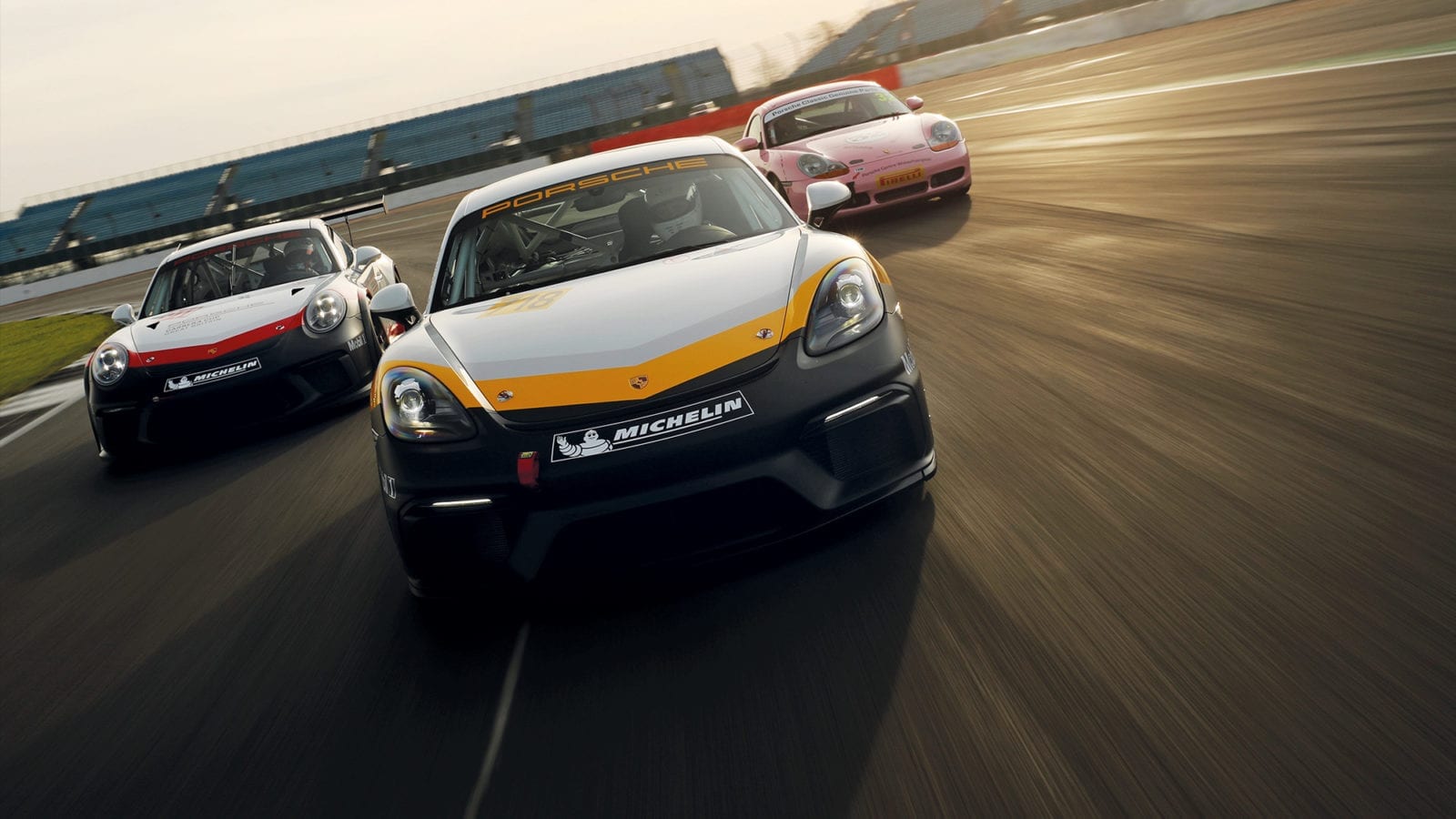
James Roberts, Jakob Ebrey
Porsche’s commitment to racing is without equal. As a works team it competes in Formula E while it conducts a serious investigation into whether or not it should return to prototype sports car racing in the forthcoming LMDh category. In the meantime it continues to field its 911 RSR racers in the GT Pro and GT Am classes while the 911 GT3R is a stalwart of many years racing in GT3 right around the world. And it doesn’t stop there.
In the UK alone, while Ferrari has just started its very first one-make race series, Porsche now has three. The original is the Carrera Cup, claimed by Porsche to be the fastest one-make championship in Britain, which has been running for 18 years and is known for its wincingly close racing and long-held status on television as a support race to the (slower) BTCC cars.
The newest is the Porsche Sprint Challenge GB, a series featuring exclusively Cayman GT4 Clubsport race cars (which run to strict GT4 rules so can also be raced in innumerable series right around the world). By far the most affordable is the Porsche Classic Boxster Cup, using only original 986 series Boxsters and run by Porsche Club GB but backed and supported by Porsche Cars.
The Cayman GT4 Clubsport feels like a grown-up Boxster
Which means there’s a Porsche racing car for almost every budget, from the approximately £20,000 you’ll need to buy a competitive old Boxster to around £900,000 for a 911 RSR, itself around twice the price of a GT3R.
But it is the UK cars – the 986 Boxster, 718 Cayman GT4 Clubsport and 911 Carrera Cup – that are at Silverstone for my perusal. I’m interested in the Boxster, really looking forward to the Cayman to see how improved it is over the previous-generation car, which I didn’t much like, and frankly scared of the 911 for reasons that will become apparent.
I thought that because this is a senior car aimed at a professional kind of driver that the 911 would be far more expensive than the Cayman. But no, the Cayman costs £131,100 before VAT, the 911 just £4700 more. The difference comes in the running costs, which we will get to presently.
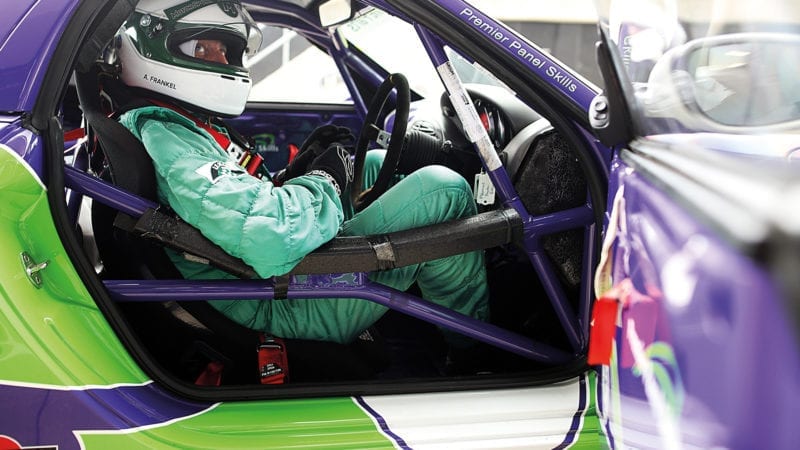
The Boxster is the entry level, with ready-to-race cars costing around £20,000
For now, however, join me in the Boxster, the perfect amuse bouche to stepping up to the modern racers. The car is kept as standard as possible, and is essentially a stripped-out Boxster S from the early years of this century, blessed with Porsche- approved circuit-orientated springs and dampers, race brake pads and very little else. Even its Pirelli Trofeo R tyres are road legal, meaning that if you wanted to drive to and from the circuit there’d be no reason not to. Drivers with an international-grade race licence are ineligible.
Given the presence of the other two, it might seem tempting to knock off as few laps in the Boxster as common decency allows, then spend the rest of my day in the good stuff. But that’s not how I feel. This is a mid- engined Porsche racing car powered by a gorgeous flat-six engine with a six-speed manual gearbox. Why would you want to shorten your time in that?
Besides, it’s instructive how merely some well-chosen suspension settings and sticky tyres can turn a pleasant road car into a capable, entertaining track device. And as anyone who’s raced a slow historic car will tell, the fact you’re not travelling at a vast speed need not spoil the fun at all.
Roughly speaking, historic is what this Boxster essentially is. It seems odd to be driving what I perceive to be a modern car that still requires you to make flawless heel- and-toe downshifts; odd, but fun. Here’s a technique, a skill even, that neither of its flasher, faster, younger stablemates requires. And like all race cars, you must learn how to extract the speed from it.
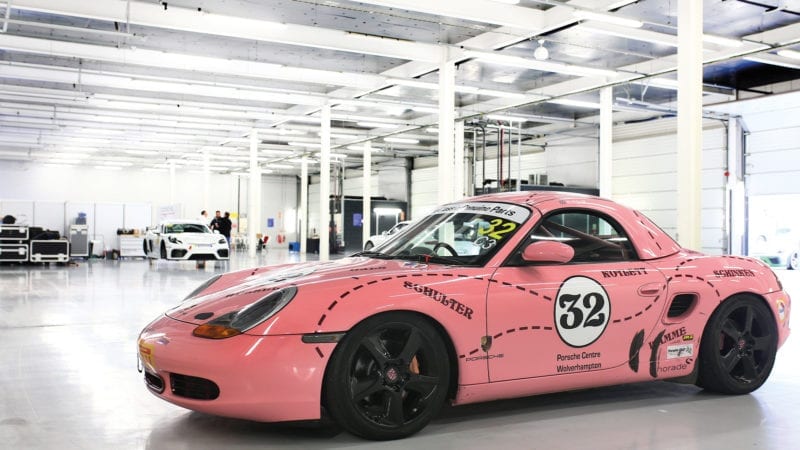
This 986 Boxster S is more pink piglet than grown-up hog; it has been raced recently by Porsche Centre Wolverhampton
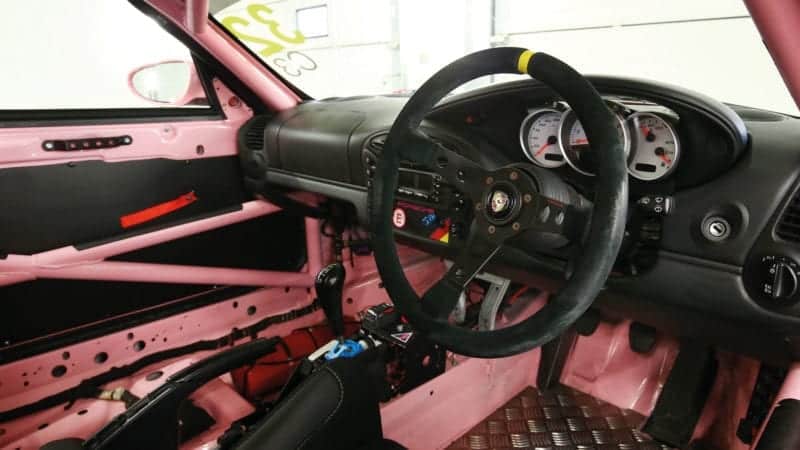
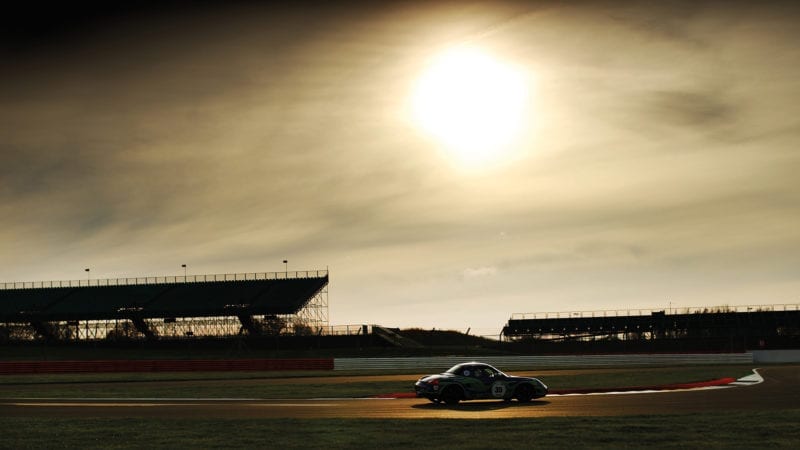
The Boxster is interesting in this regard: on one hand its treaded tyres are far less settled in the corners than the slicks of the other two, so the temptation is to get it sliding early and power out of the corner. Except that’s not what it wants: it still has a surfeit of grip over power, traction is good and even if it breaks loose at the back there’s no limited- slip differential to maintain the slip angle.
It’s all about carrying as much speed into the corner as you can because there’s not the power to reacquire any that you may have casually shed before the apex. Once learned, it is a straightforward device to drive, the ideal introduction to Porsche racing. The other two are not so simple.
That said, the Cayman GT4 Clubsport does feel like an incredibly grown-up version of the Boxster, and as both are mid-engined normally aspirated flat-six-powered Porsche racing cars of similar mass, perhaps there is no surprise in that.
While the Boxster has 258bhp from its 3.2-litre motor, the Cayman offers 425bhp from 3.8 litres. The Cayman has a limited-slip differential, race suspension with adjustable geometry and damping characteristics, race- specification brake calipers and pads too. It has individually switchable traction control and electronic stability control, as well as track-tuned ABS. Then there is the small matter of those slicks which, even with quite a hard compound, make any road-legal tyre feel as grippy as soapy cardboard.
But as you climb aboard you won’t be thinking about any of that, you’ll just be looking wide-eyed at the Cosworth information display, figuring out the steering wheel buttons and settling into not a mildly modified road car, but a proper racer.
I love GT4 cars. I think they exist at a point where they are fast enough to thrill yet not so specialised that they need either an implausible budget or a team of professional drivers to use them properly. Or both. With improvements in tyres, suspension and aero, their pace today is comparable to that of a GT3 car of perhaps a dozen years ago. This means anyone with a modicum of talent who’s done a bit of racing can climb in and so long as they’re prepared to spend a bit of time testing and poring over the data, they should at the very worst not make a fool of themselves in race conditions. More likely they’ll be competitive.
Indeed some might consider a GT4 car like this Cayman almost too easy, because it is an inherently forgiving car even before you consider the layers of active safety systems such as the ABS and traction control at your disposal, and I get that entirely. But to me this accessibility is a good thing: it evens the playing field, makes for closer racing while at the same time allowing the true talents on the grid – who apart from anything else will always run with a lower level of electronic interference – to shine.
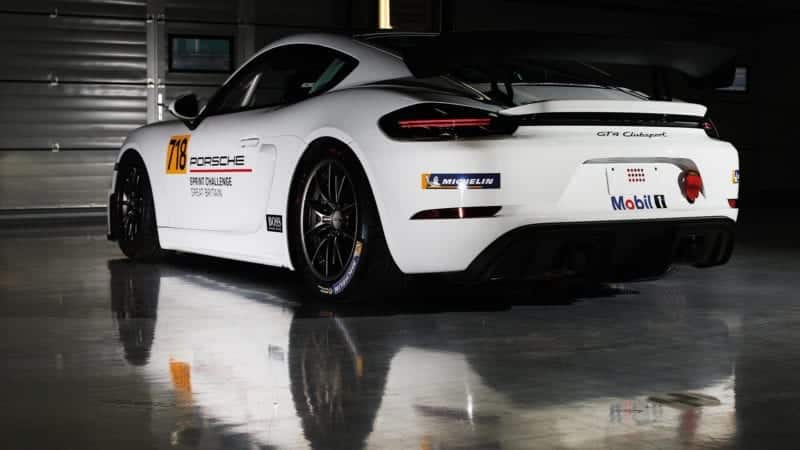
The 718 Cayman GT4 Clubsport features in Porsche’s Sprint Challenge GB, which has been supporting the British GT Championship
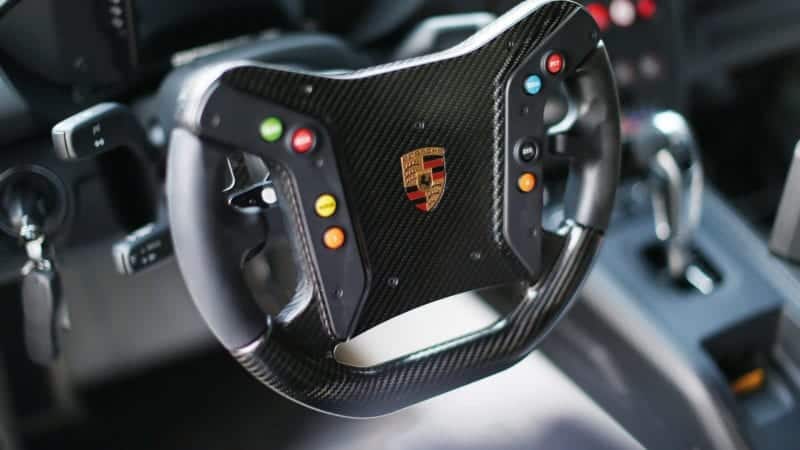
As a newcomer to it, while you might be slightly intimidated in the pitlane, as soon as you’re on track all the messages are good. You don’t even need to worry too much about falling off trying to warm the Michelin slicks because the stability control will detect and correct any slip before it gets out of hand. Gearshifts come via paddle-executed instructions to the same PDK gearbox as the road car, albeit with its entirely redundant seventh gear removed.
If you know the track, you’ll be driving hard from the second lap. When I tested the last generation Cayman GT4 in 2016, I didn’t much care for it. It porpoised in corners, had inconsistent ABS response and wasn’t that reassuring. But this car is fully developed and easy to drive fast.
Even more so than usual, the straights are what connect the fun parts of the track. The Cayman’s 425bhp may sound like plenty, but the car could cope with far more power. You’re not exactly twiddling your thumbs down Silverstone’s Hangar Straight – the engine is lovely to listen to and the gearshifts crisp – but it’s only once the Cayman is in the braking area that it’s at its best.
You hit the brakes with all the force your thigh can muster because with ABS there’s no reason not to. Despite being equipped with iron discs on quite hard slicks without huge downforce, you’ll still be glad someone did your belts up tight.
You bleed off the brake pressure as you pass the turn-in point, juggling the tyres’ ability to provide both longitudinal and lateral grip, but you don’t have to be too precise about where you get back on the power or how hard. In the former case the electronics will trim back your enthusiasm, in the latter there is so much traction you rarely even feel the control systems kick in.
Doubtless it would be different in the wet. But in the dry and even with all safety systems disabled, the Cayman is still a fabulously easy racing car to drive fast. Unfettered, the back end is not flawless and would allow the car to oversteer quite quickly on corner entry, but the yaw rate is linear and easily collected. And I expect you could dial that out with damper settings quite quickly.
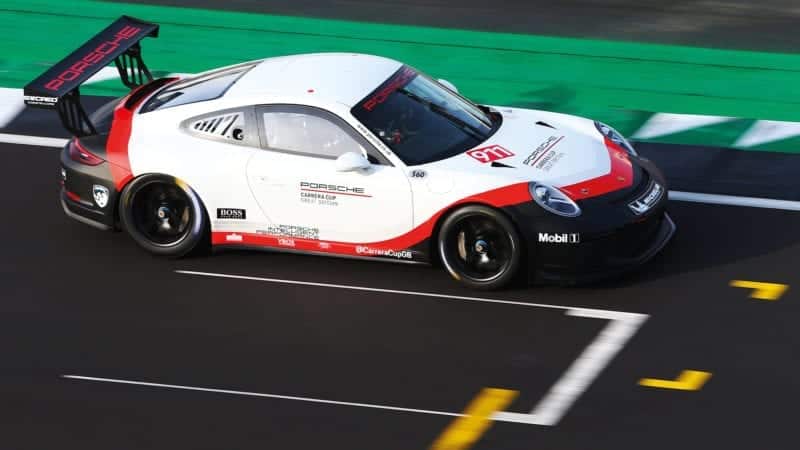
In the Porsche Carrera Cup GB each driver has an identical 485bhp 911 GT3 Cup car
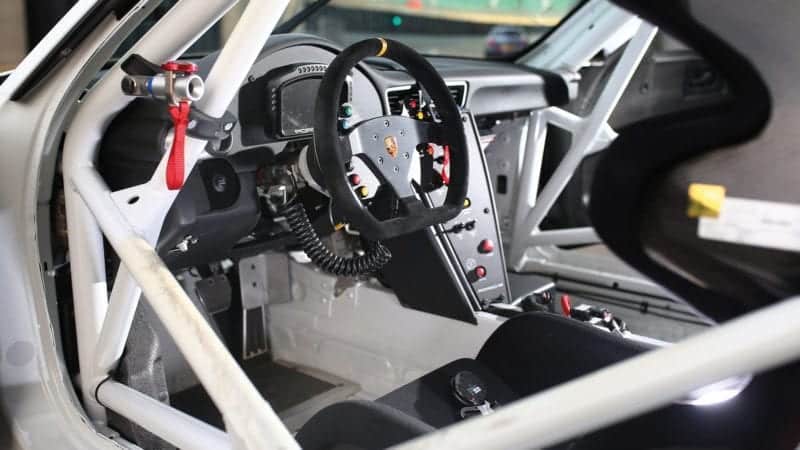
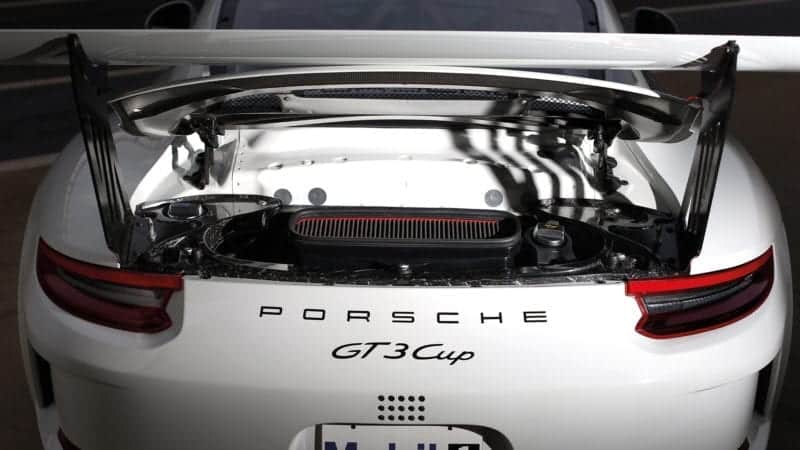
You might imagine the step up to the 911 Carrera Cup car to be just that: a step for sure, but a logical progression. It is nothing of the sort. Indeed, if you look at it in terms of the mental approach required to drive it, the Cayman is closer to the Boxster than the Cup car. The 911 is a completely different proposition, and for those who fail to appreciate and treat it as such the results are unlikely to be pretty.
The first thing to realise is that although similar in price to a Cayman, that’s where financial comparisons stop. For instance, the 911 engine is lifed at 100 hours, its bespoke Porsche six-speed dog box at 60 hours. In the Cayman neither item is lifed at all. Porsche estimates ballpark running costs for a season of Carrera Cup at somewhere around £225,000, which is £100,000 more than you’d need for a year in the Cayman. That’s before you throw it into the scenery, as easy a feat to accomplish in the 911 as it is difficult in the Cayman.
Why? Well, although the 911 is over 100kg lighter and far more powerful thanks to a 485bhp 4-litre motor, it has little to do with a dramatically superior power-to-weight ratio. In fact there are two real issues and the first is as easy to see as the photographs on this page: it’s a 911. Those who drive street 911s these days are so used to their immaculate behaviour it is too easy to forget that their design is inherently unstable, to wit, all the weight is at the back, and once it becomes mobile, all it wants to do is get to the front.
But drive a Cup car on slicks with no rubber in its suspension as fast as you can and unlike its road-going brethren, it indeed wants to handle like a traditional 911. No problem, you might initially think, because you can delegate the management of all those old issues like premature lock-up and snap oversteer to the electronic safety systems. Which is a great idea in theory. In practice though, the strategy is flawed because this particular 911 doesn’t have any. No traction or stability control, no ABS. Nothing. And if that’s not enough to convince you to drive it differently, it also has a completely different kind of tyre to the Cayman’s user-friendly long-distance slick. The Carrera Cup 911 comes on sprint- specification rubber and if you don’t look after it another entire world of pain awaits you: once the grip goes, it stays gone.
And yet, for those happy to make the relevant adjustment to their driving style, the 911 provides an experience not just beyond the Cayman GT4, but over the horizon. The additional pace is easy to accommodate because in a straight line it’s still not that fast. You don’t have to factor in downforce management either, because despite that vast rear wing there’s not that much to manage. But you do have to drive it like a 911.
Indeed, probably the best way to approach it in the first instance is to think of it more as a 1960s 911 with inexplicable amounts of power and grip. If you lock the front brakes, the flat spots will send you scuttling to the pits for new tyres, so I was using around half of the brake pressure I deployed in the Cayman.
And you do much more of your braking in a straight line because, just like with an old 911, you can’t just chuck it in on the brakes and sort it out. At best you’ll ruin the tyres, at worst… Well I’m sure you can imagine the scenario.
But all that you lose on the way in, you recover at the apex. I’ve complimented both the Boxster and Cayman for their traction capabilities, but this is another world. Once the car is properly rotated into the corner you can open the steering, stand on the throttle, hear the howl of that race engine and find yourself in 911 nirvana.
And the more you drive the better it gets. My gripe with most modern racers is that they lack the feel of the historics in which I spend most of my hours on track. Not this one. Give it time, look after the Michelins and you can feel yourself being absorbed by the machine. The little dash lights that warn you of imminent brake lock become entirely redundant. You can feel it and you can hear it. You don’t need to be told. You can feel the grip and the balance in the corners. It may be pretty unforgiving beyond the limit, but no one can say that it doesn’t signal where that limit is.
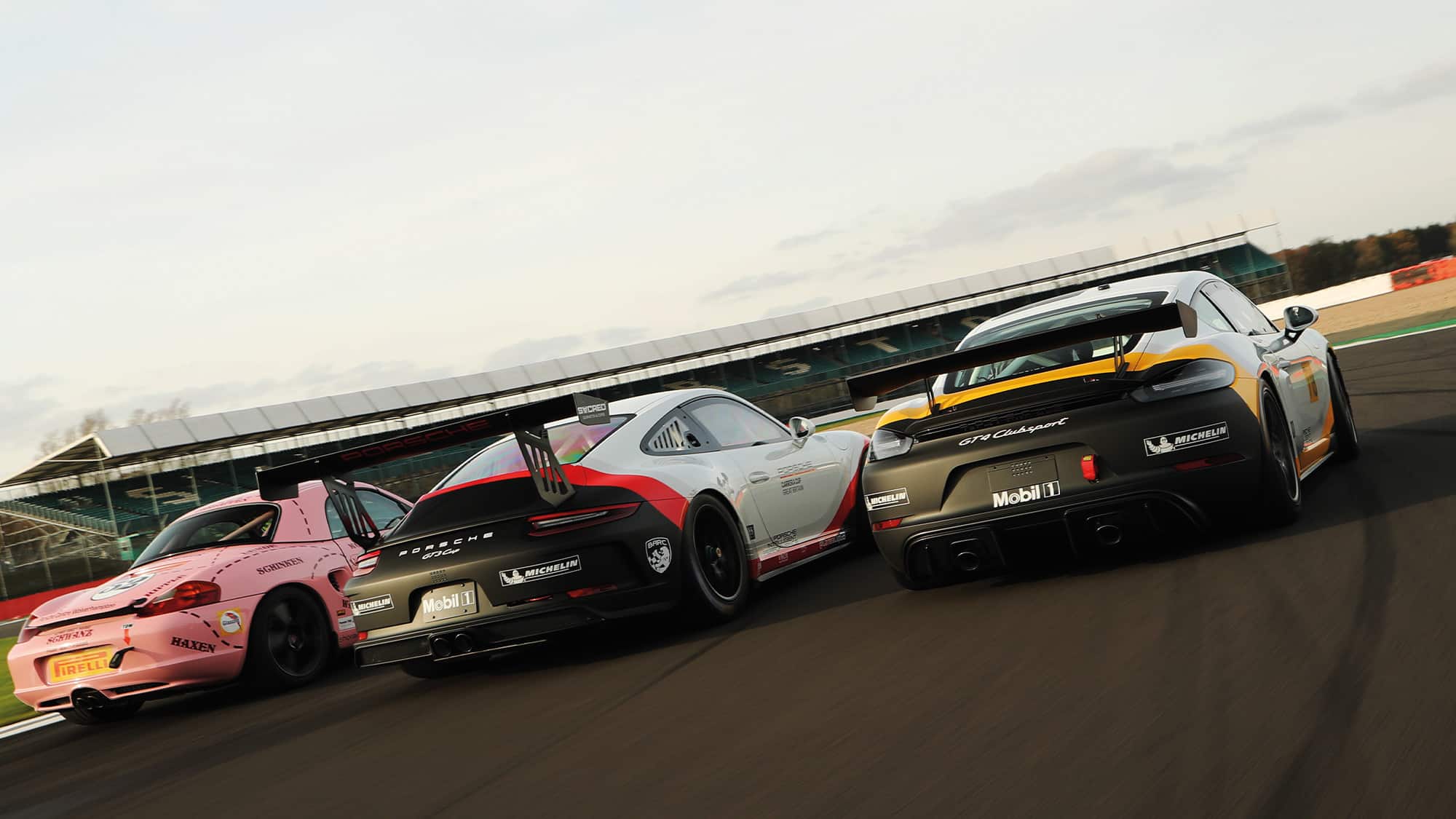
Which is why in the end I felt most at home in the 911. The Boxster is the ideal entry point to Porsche racing, as is the Cayman to the world of GT4. The former is by no means a half-hearted apology for those who can’t afford the real deal: it’s a lovely car to drive, and surrounded by a gridful of them, I imagine you’d laugh yourself silly all weekend.
The Cayman is the perfect gentleman driver’s long-distance race car because it is almost without vice. I’d love to do a round of the Sprint Challenge in one, but I’d like to do a 24-hour race even more. And you know it would be as good on the last lap as the first.
Can the same be said for the 911? Not even close. I was fairly sweaty after 20 minutes, and even if you could fit tyres to last a decent double stint, you could not say the same about the driver. Not this one at least.
And yet I’d walk past the other two without blinking to get another lap in the 911. Packing the speed and grip of a modern racing car with the involvement of something far older, it’s pretty much everything I want a racing car to be: fast, challenging and endlessly rewarding. A 911, in other words.













































































































































































































